City walking guide: the 'small but beautiful' of Leicester - history, gardens and life
"Cityscape" is a very broad term that most of the time refers not only to a certain place, but also to a place we have experienced, are familiar with and have left deep memories. It may be obvious to everyone, or it may be a secret that only you know.
Memories are raging, and the authors are calm, sincere, and honest. We hope to take you on a journey through each of the interesting and extraordinary cityscapes in our "City Walk Guide" series.
In 2012, the skeletal remains of Richard III, missing for centuries, were unearthed from under a car park in a central English city, and the following year, the city's team was promoted to the Premier League, where it miraculously won the title that same year. "And with that, the city of Leicester became world famous. And it was in 2012 that I came to the city and spent a year there. It was one of my longest stays abroad and I took time to revisit the city on my way to the UK at the end of 2019, not realising it would be the last stop on my foreign tour before the epidemic.
In the second year of not being able to travel out of the country, just this post takes you on a stroll through Leicester, the 10th largest city in the UK.
Note: Most of the photos in this article were taken by the author in 2012 - a time when cell phone cameras were only 3 megapixels. The photos may not match the actual view in 2021. However, based on a revisit to the stomping grounds in late 2019 and the speed of infrastructure updates in the UK, the pictures are not too different from the real thing.
Most people don't pronounce my name right | [ˈlɛstər]
The original myth about 'Leicester' came from its English name: Leicester, which most people's first reaction would be to pronounce as 'Leicester' or 'Leicester'. Not surprisingly, after all, the national media in the 1990s also referred to the now 'championship team' as 'Leicester City'. Compared to other famous tourist cities and major towns, Leicester's tourist attractions are monotonous and lacking. Leicester's city centre is only 73 square kilometres and all the city's amenities are basically spread out around London Road, the main road in the city centre. As a result, the most common form of transport I used during my year in Leicester was the '11' - on foot. But that doesn't stop it from being a 'small but beautiful' city.
The route of today's walk is shown below.
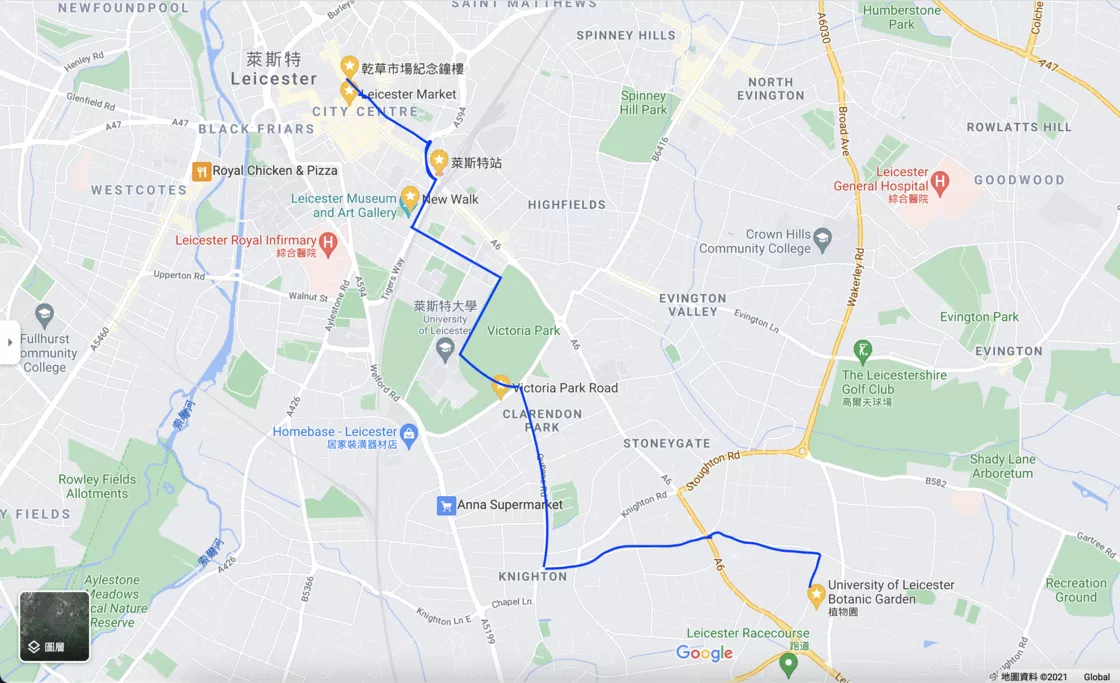 The starting point of the journey | Leicester Railway Station
The starting point of the journey | Leicester Railway Station
- Positioning postcode: LE2 0QB
There are many ways to get to Leicester, but the most common is by train. Located in the heart of the British Isles, the city is very well connected and a change or two of trains can take you to basically every major city in the UK. This train station is the starting point for our walk today.
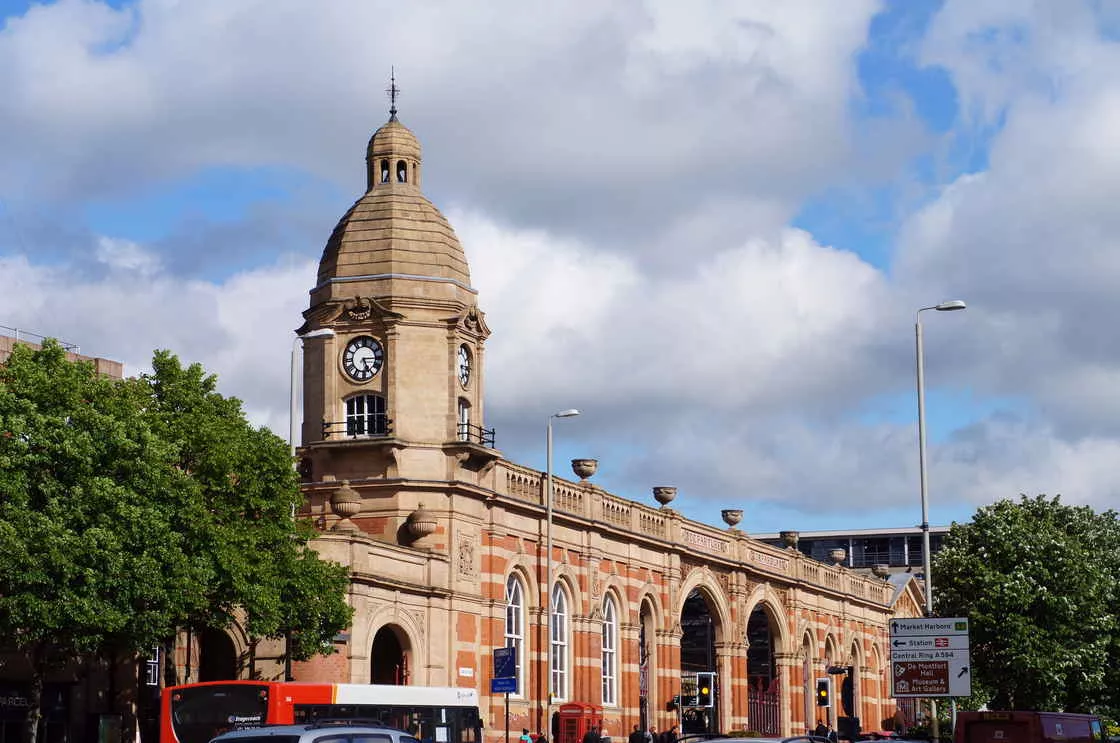 For a long time, this was my computer desktop background This traditional English red brick style railway station was built in 1840 and was one of the first few train stations and one of the city's icons. The style and details of the building (such as the two arches at the entrance) make me feel like I've traveled back in time to the days of steam trains or even to Hogwarts Station in Harry Potter.
For a long time, this was my computer desktop background This traditional English red brick style railway station was built in 1840 and was one of the first few train stations and one of the city's icons. The style and details of the building (such as the two arches at the entrance) make me feel like I've traveled back in time to the days of steam trains or even to Hogwarts Station in Harry Potter.
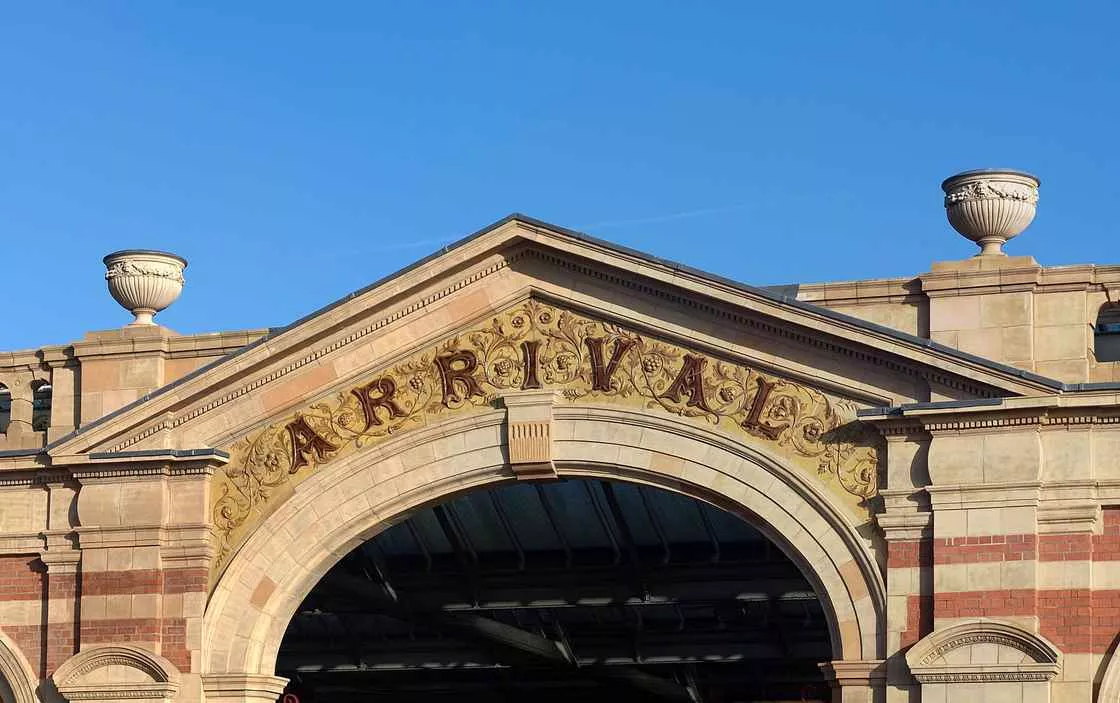 By NotFromUtrecht - Own work, CC BY-SA 3.0, via Wikimedia Commons has a sculpture of a traveler dragging a suitcase in front of a train station that is often overlooked. But that's no surprise: it seems so commonplace in front of a train station. If you read the description underneath, you'll see that there's a lot more to this man, and it was here that Thomas Cook led a tour to Loughborough, not far from Leicester, for the Prohibition Convention in 1841. It was the first tour in the world's history, and Thomas Cook became the first person to travel with a tour group. Today, millions of tourists arrive in this historic city by train each year, walk out of the station and rub shoulders with the 'grandfather' of the group tour. In the 21st century, most of the tourists who come here don't come by way of a group tour, so I wonder what the 'grandfather' who saw it all thinks.
By NotFromUtrecht - Own work, CC BY-SA 3.0, via Wikimedia Commons has a sculpture of a traveler dragging a suitcase in front of a train station that is often overlooked. But that's no surprise: it seems so commonplace in front of a train station. If you read the description underneath, you'll see that there's a lot more to this man, and it was here that Thomas Cook led a tour to Loughborough, not far from Leicester, for the Prohibition Convention in 1841. It was the first tour in the world's history, and Thomas Cook became the first person to travel with a tour group. Today, millions of tourists arrive in this historic city by train each year, walk out of the station and rub shoulders with the 'grandfather' of the group tour. In the 21st century, most of the tourists who come here don't come by way of a group tour, so I wonder what the 'grandfather' who saw it all thinks.
 Source: Chemical Engineer, CC BY-SA 4.0, via Wikimedia CommonsOne pound banana | 莱斯特市场
Source: Chemical Engineer, CC BY-SA 4.0, via Wikimedia CommonsOne pound banana | 莱斯特市场
- Positioning postcode: LE1 5GG
Whenever I visit a city, I make sure to visit the local supermarket and food market, as that is where I can best experience the local culture. Leicester is no exception.
Turn right out of the train station and walk about five minutes to the Open Market in the heart of Leicester. This market has a very discreet entrance, but it is nearly eight hundred years old and was one of the first open-air markets in Europe. It still functions as an open-air market today.
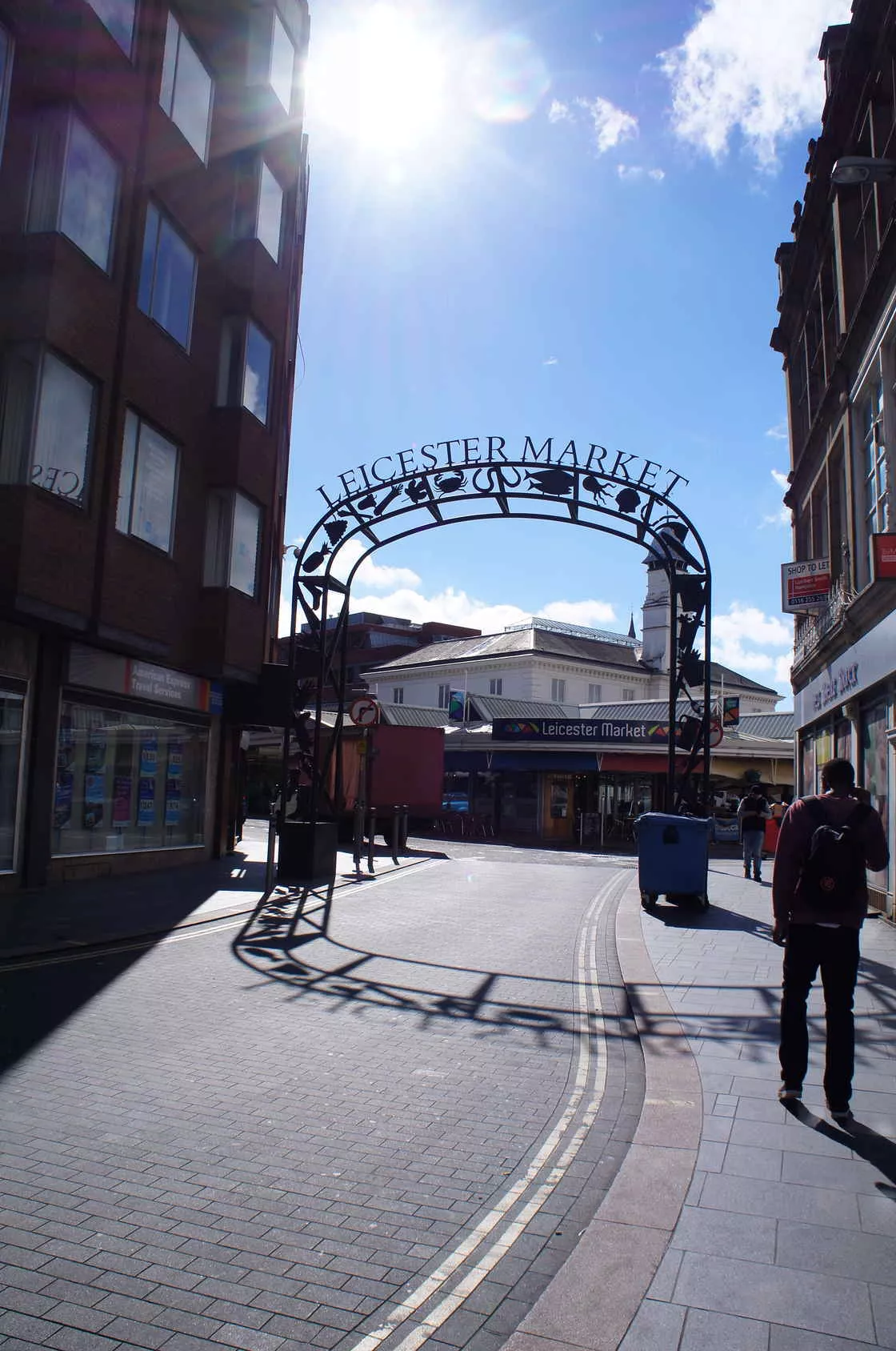 When I walked into the market, one stall under the big shed was yelling hard, and the whole market echoed with "One pound a bowl" "One One pound banana, one pound" is being shouted all over the market. Walking around the market, you will never forget the tone of voice of this group of hawkers, and even after ten years, I can still reproduce it in my original voice as I am writing.
When I walked into the market, one stall under the big shed was yelling hard, and the whole market echoed with "One pound a bowl" "One One pound banana, one pound" is being shouted all over the market. Walking around the market, you will never forget the tone of voice of this group of hawkers, and even after ten years, I can still reproduce it in my original voice as I am writing.
Compared to regular supermarkets, the fruit and vegetables here are fresh and cheap. You might be able to buy a few bananas for a pound at Tesco, but you can buy a big bowl here. So this has become a regular weekly stop for us, after all, supermarkets are not cheap. Every Friday the classes were scheduled for the first morning session, with the last afternoon session. After the morning class, a few of us walked straight to the city centre and then back to school for the rest of the lecture with a big bag of vegetables and fruits, a spectacular sight among a group of British students.
And at Christmas, it's a different story. From the night of the lighting ceremony, the souk holds a continuous Christmas market, selling not just fruits and vegetables, but all sorts of Christmas-themed trinkets, handicrafts, and national (and not so Christmas-related) food. And of course, how can you go without mulled wine at Christmas? Compared to the "Christmas markets" in China, the ones here are more simple and have a more rustic Christmas atmosphere.

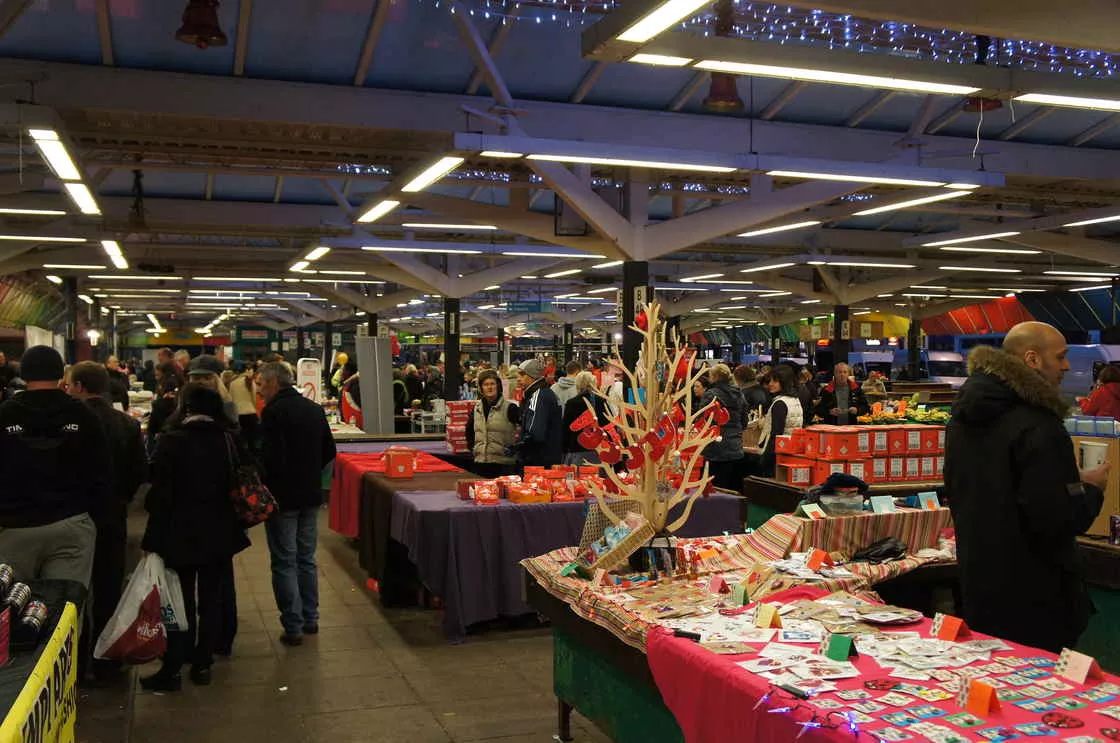 From the Open Market, it's about a five-minute walk to the City Centre --As the name suggests, the heart of the city, and the most lively area of the city. In the middle of this "pentagon" stands the clock tower, the symbol of the city. The clock tower was built in 1868 and was the landmark of Leicester at the time. Four important figures in Leicester's history are carved around the base of the clock tower, hence the name 'Memorial Clock Tower'. At weekends, many street performers come and set up stalls under the clock tower. Around Christmas time, a huge Christmas tree is erected next to the clock tower and lit up with lights, and a small playground is even set up, making it very lively.
From the Open Market, it's about a five-minute walk to the City Centre --As the name suggests, the heart of the city, and the most lively area of the city. In the middle of this "pentagon" stands the clock tower, the symbol of the city. The clock tower was built in 1868 and was the landmark of Leicester at the time. Four important figures in Leicester's history are carved around the base of the clock tower, hence the name 'Memorial Clock Tower'. At weekends, many street performers come and set up stalls under the clock tower. Around Christmas time, a huge Christmas tree is erected next to the clock tower and lit up with lights, and a small playground is even set up, making it very lively.
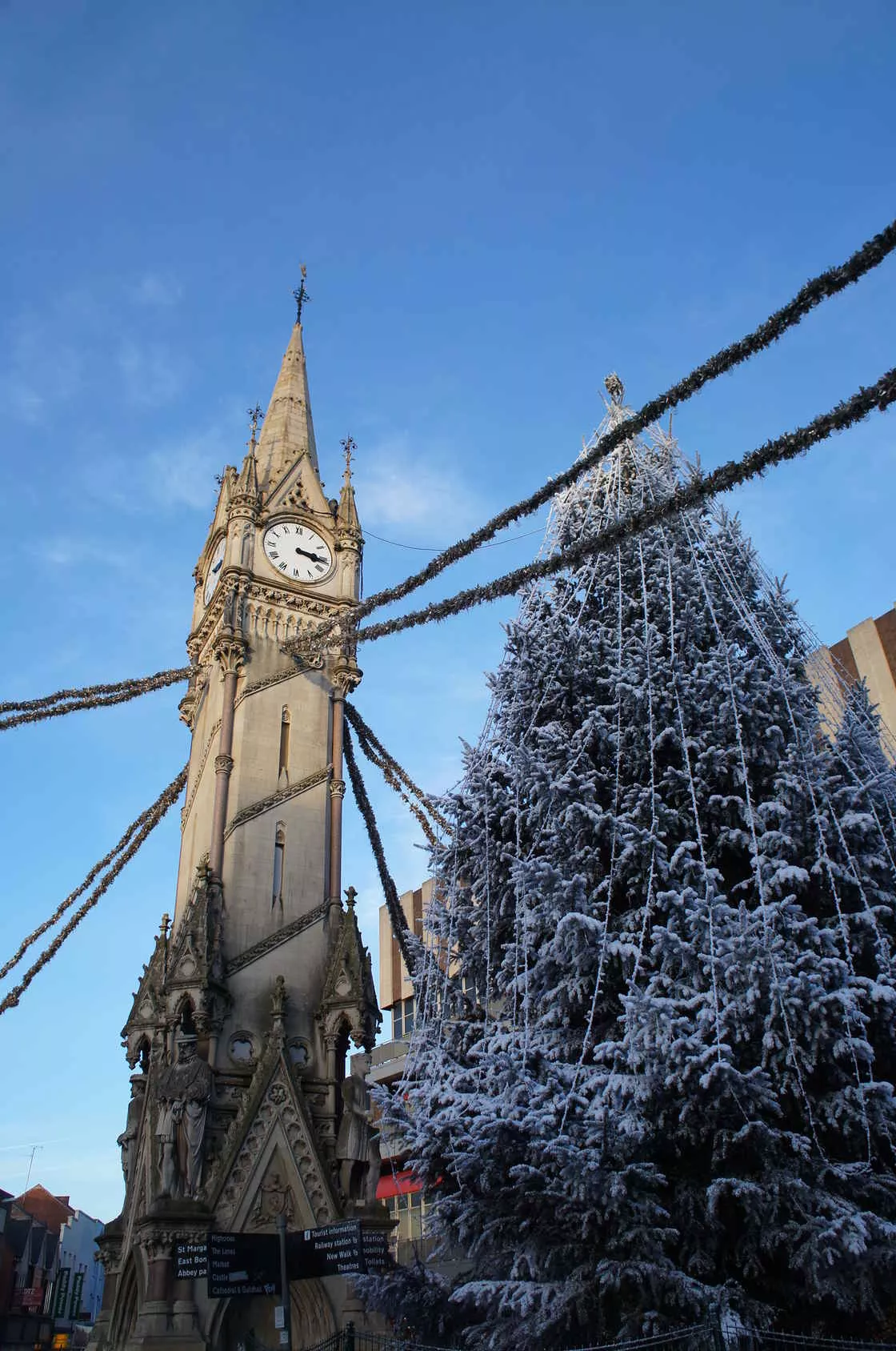
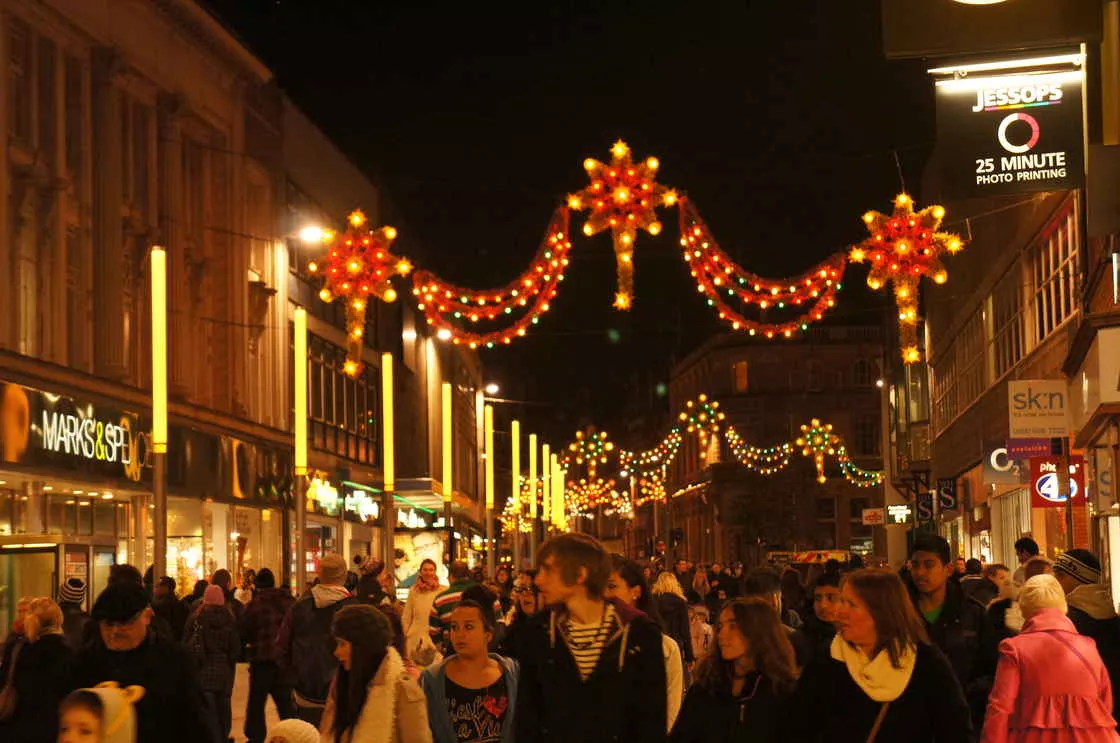 The Christmas lights that excite the whole city are not worth mentioning compared to the gorgeous city lights in Japan, but they are still simple and beautiful and are included as LEGO Model of the boulevard | New Walk
The Christmas lights that excite the whole city are not worth mentioning compared to the gorgeous city lights in Japan, but they are still simple and beautiful and are included as LEGO Model of the boulevard | New Walk
- Positioning postcode: near LE1 7EA
Now let's return to the station exit and cross London Road, the city's main thoroughfare, where behind the hustle and bustle of traffic lies New Walk, a mile-long trail covered in shade and seemingly insulated from the noise of traffic. On one side of the path is the City Centre and on the other is the University of Leicester, with the city's museum (New Walk Museum), churches, hotels and restaurants on either side of the road.
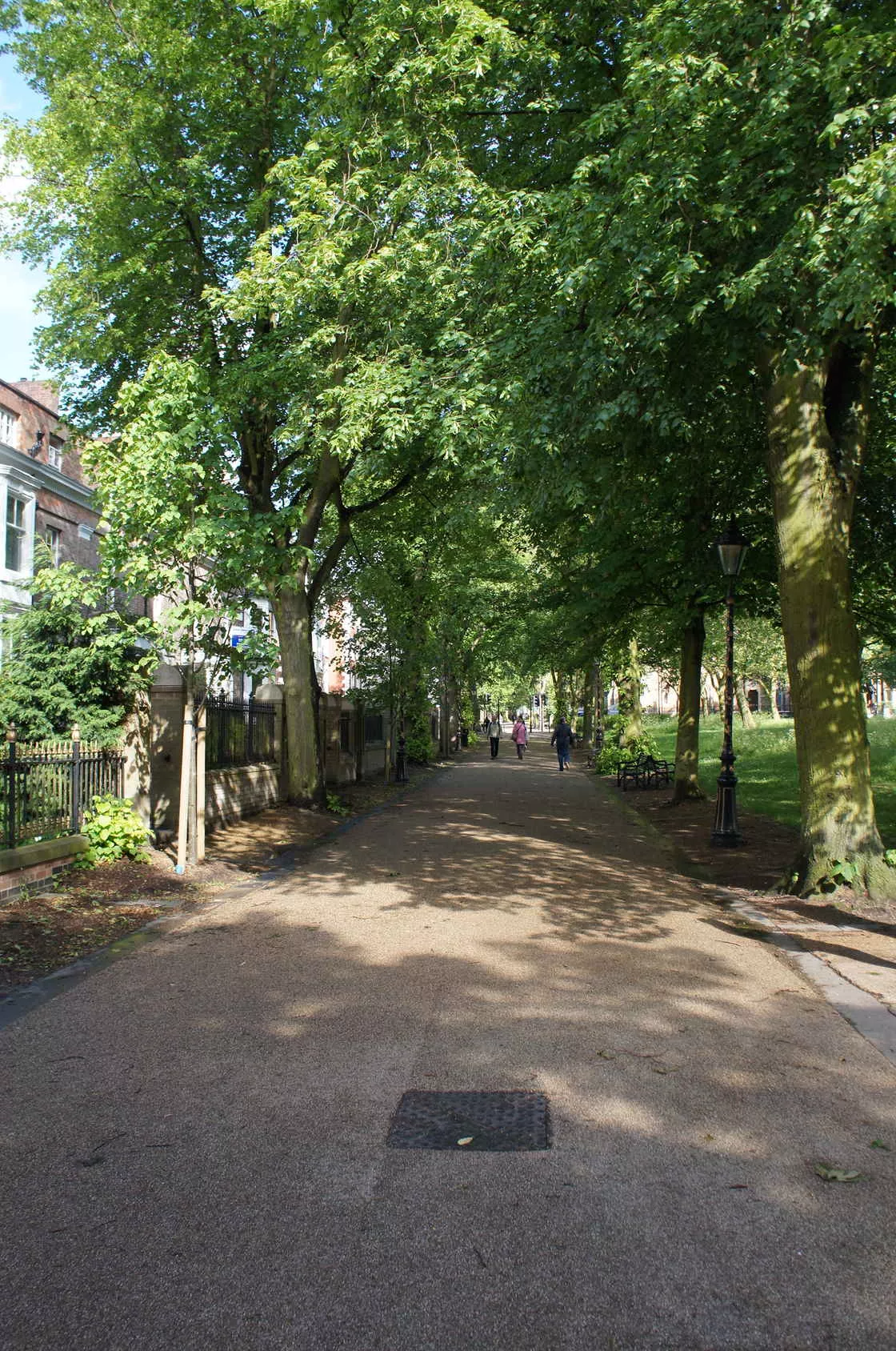
 Last year, a LEGO enthusiast built a Brick Walk based on the New Walk, which is a near perfect replica of the New Walk's streetscape. The project has garnered 100,000 backers on the web and is already in the official LEGO project review queue.
Last year, a LEGO enthusiast built a Brick Walk based on the New Walk, which is a near perfect replica of the New Walk's streetscape. The project has garnered 100,000 backers on the web and is already in the official LEGO project review queue.
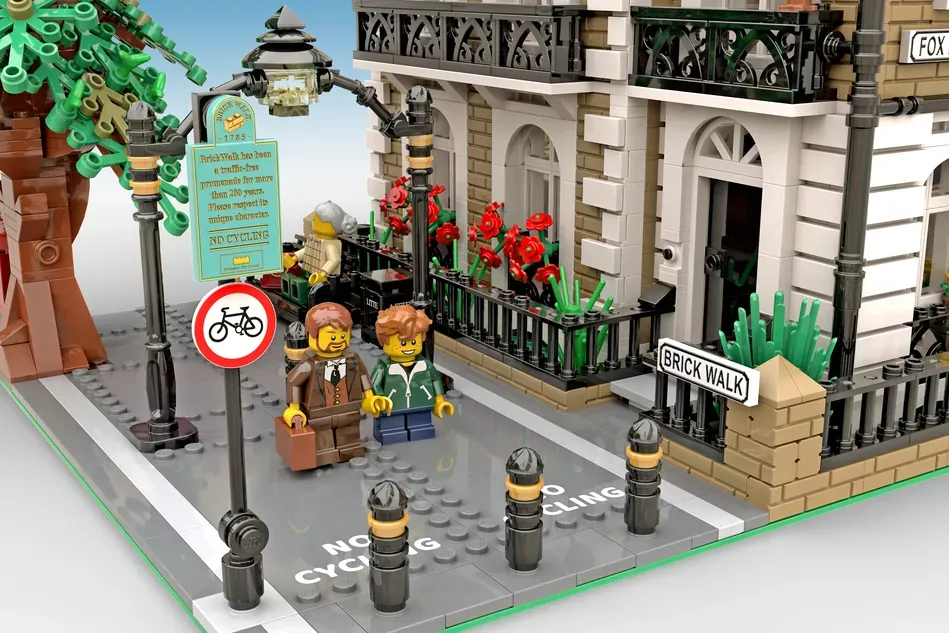 Source: Brick Walk projects/518a2fc8-fa2f-4319-b235-87dca82970b2)From Work to Life | Victoria Park
Source: Brick Walk projects/518a2fc8-fa2f-4319-b235-87dca82970b2)From Work to Life | Victoria Park
- Positioning postcode: LE1 7PA
 The iconic 'white gate' leads you along New Walk to a wide grassy area. This is Victoria Park, the daily route from the University back to the halls of residence, and because it covers a large enough area, it encloses the University of Leicester and separates it from the business and living areas. In the middle of the park stands the huge World War I memorial, where a huge commemoration is held every year on the 11th of February.
The iconic 'white gate' leads you along New Walk to a wide grassy area. This is Victoria Park, the daily route from the University back to the halls of residence, and because it covers a large enough area, it encloses the University of Leicester and separates it from the business and living areas. In the middle of the park stands the huge World War I memorial, where a huge commemoration is held every year on the 11th of February.
The path between the meadows undulates with the terrain, with a difference in height of about five centimetres between the two 'lanes' on the left and right, with one written on the ground as a footpath and the other as a cycle path. However, in my observations, no one ever seemed to obey this rule, whether pedestrian or bicycle.
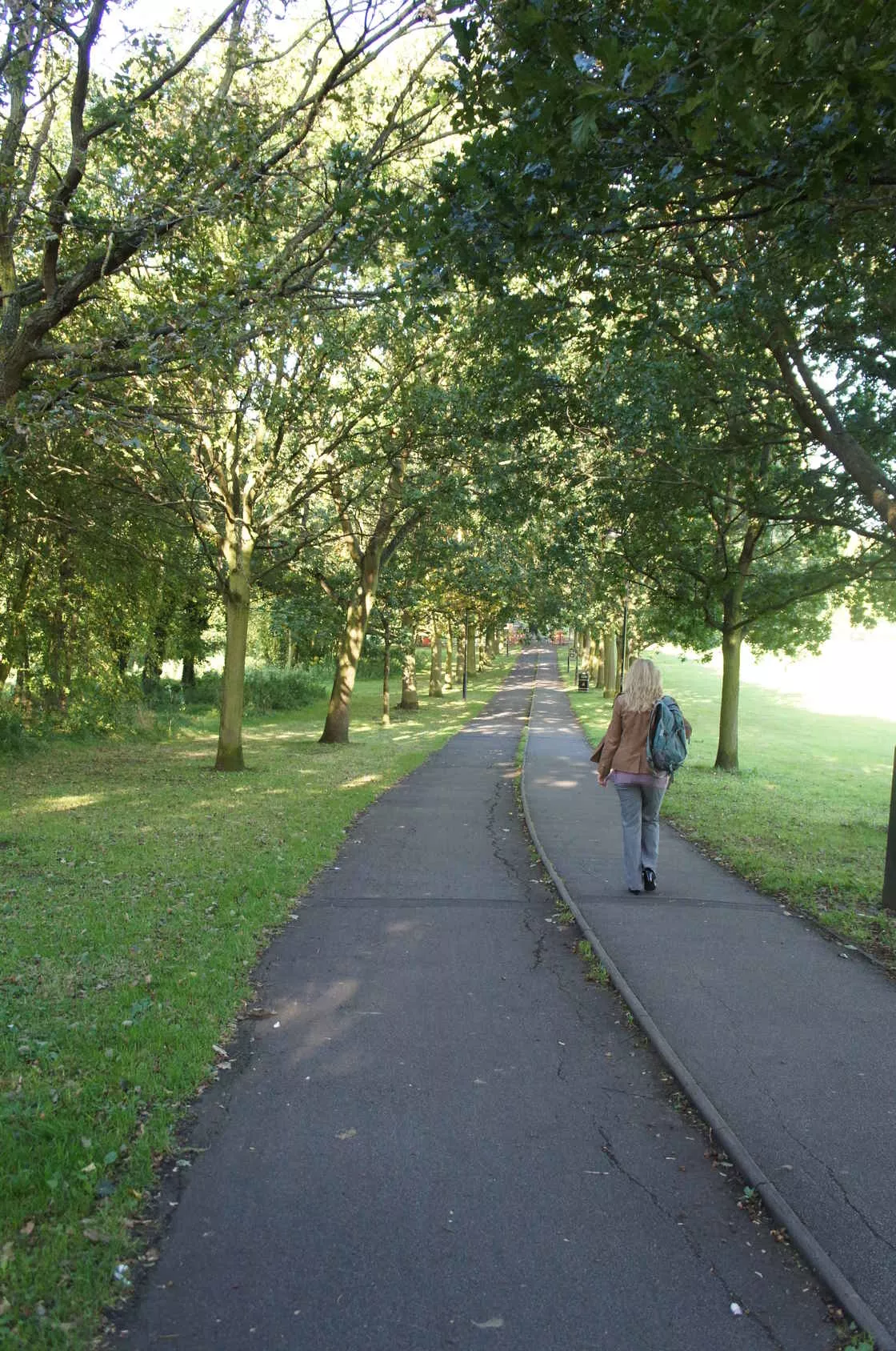 The large lawn on the left is often filled with students sitting on the ground, chatting or having a picnic. In the short British summer, it is even more bustling. The small lawn on the right is the training ground for the school's Quidditch club. At the start of the school year, the paths throughout the park are covered in golden leaves that rustle on the way home.
The large lawn on the left is often filled with students sitting on the ground, chatting or having a picnic. In the short British summer, it is even more bustling. The small lawn on the right is the training ground for the school's Quidditch club. At the start of the school year, the paths throughout the park are covered in golden leaves that rustle on the way home.
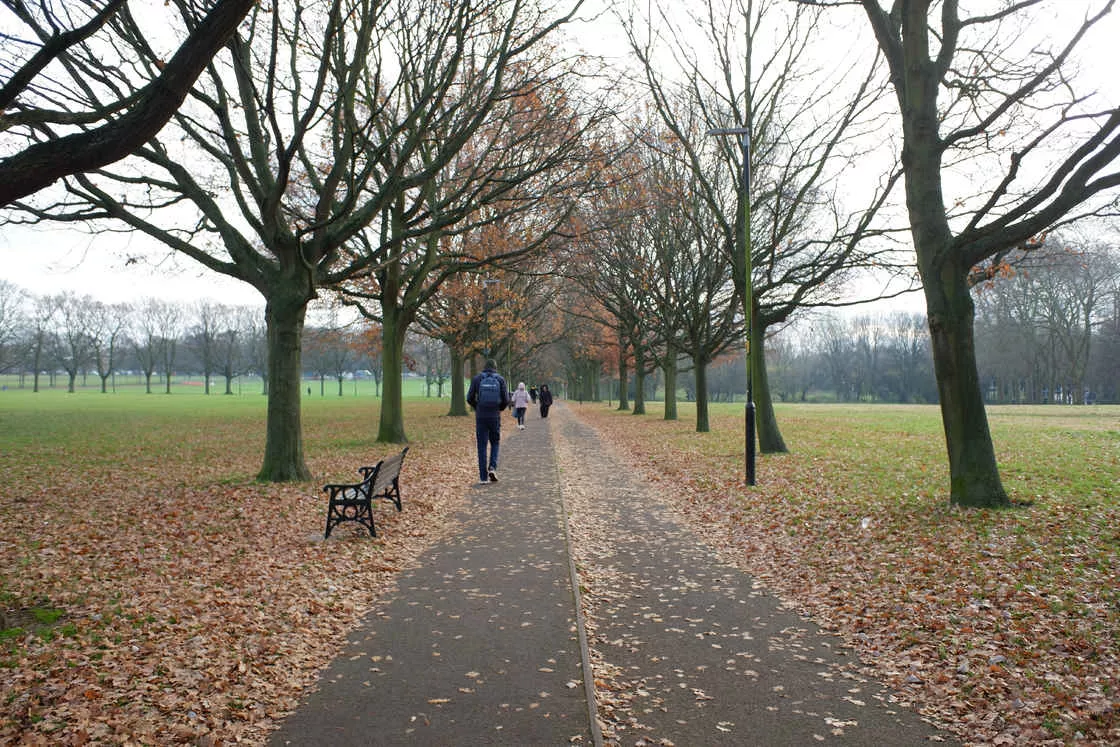 And in the long winter months, especially on snowy days, Victoria Park becomes a blanket again, making the big descent across the park a difficult walk. Who can imagine the hot summer sun just looking at the picture below?
And in the long winter months, especially on snowy days, Victoria Park becomes a blanket again, making the big descent across the park a difficult walk. Who can imagine the hot summer sun just looking at the picture below?
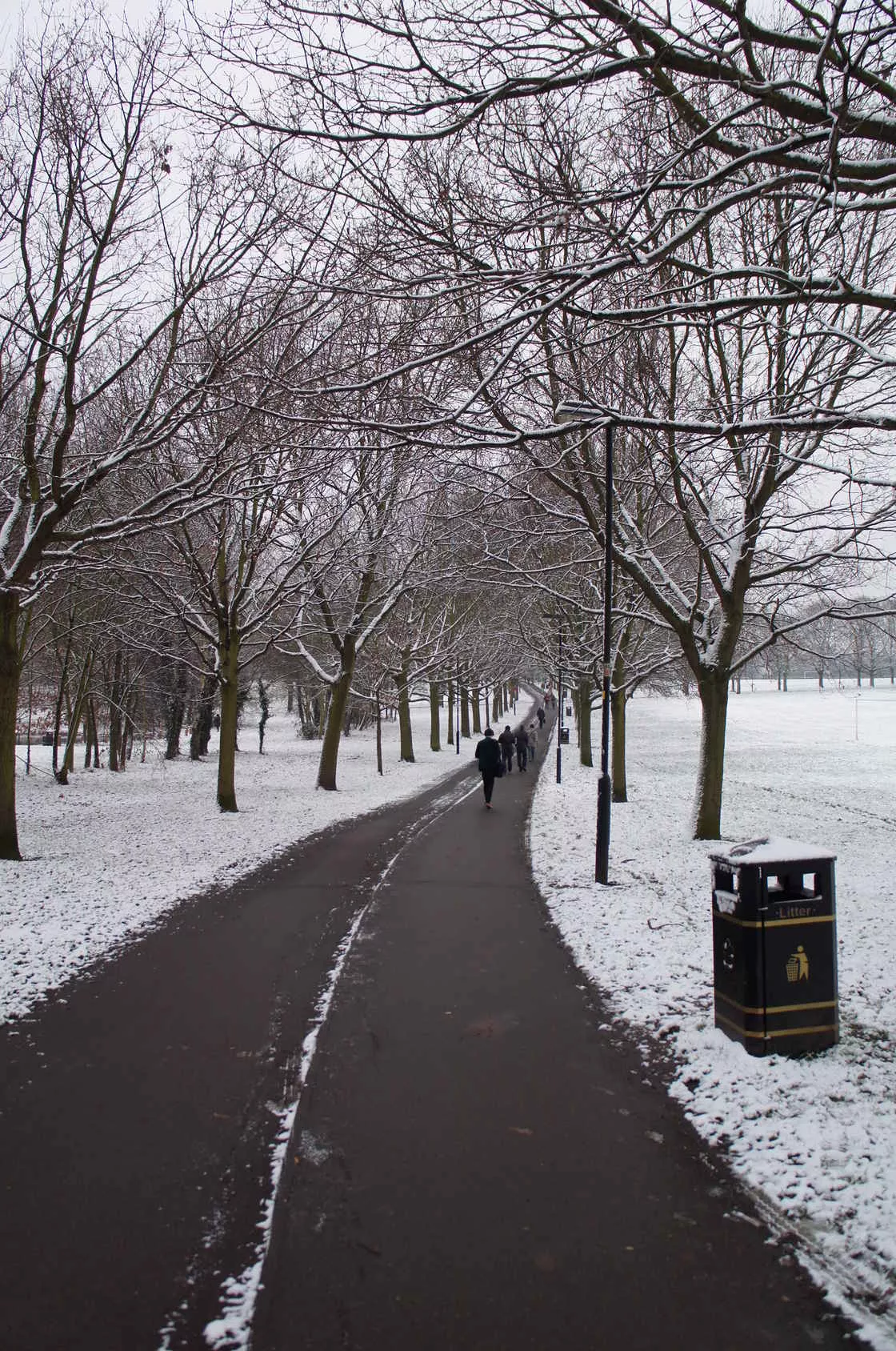 Crossing Victoria Park, we said goodbye to work and study and arrived in a residential area full of life. Queen's Road, directly opposite the park exit, is the main road to the hostel and a shopping street belonging to the local residents. It's basically a one-stop shop for all your daily needs: post office, pharmacy, supermarket, cafes, butchers, hairdressers ...... have everything. I still remember the first time I saw a butcher walking down the road with a whole pig on his back - something you certainly don't see in City Centre.
Crossing Victoria Park, we said goodbye to work and study and arrived in a residential area full of life. Queen's Road, directly opposite the park exit, is the main road to the hostel and a shopping street belonging to the local residents. It's basically a one-stop shop for all your daily needs: post office, pharmacy, supermarket, cafes, butchers, hairdressers ...... have everything. I still remember the first time I saw a butcher walking down the road with a whole pig on his back - something you certainly don't see in City Centre.
Dormitory's exclusive back garden | Botanic Garden
- Positioning postcode: LE2 2LD
By the time we continued our two kilometre walk forward to the university halls of residence area, we had in fact left the main city of Leicester and reached the surrounding town of Oadby. Most of the university's dormitory area is a conversion of small English-style buildings from decades ago, surrounded by the city's affluent neighbourhoods, and if there are no parties that day, the whole area is very quiet and a great place to settle down and read.
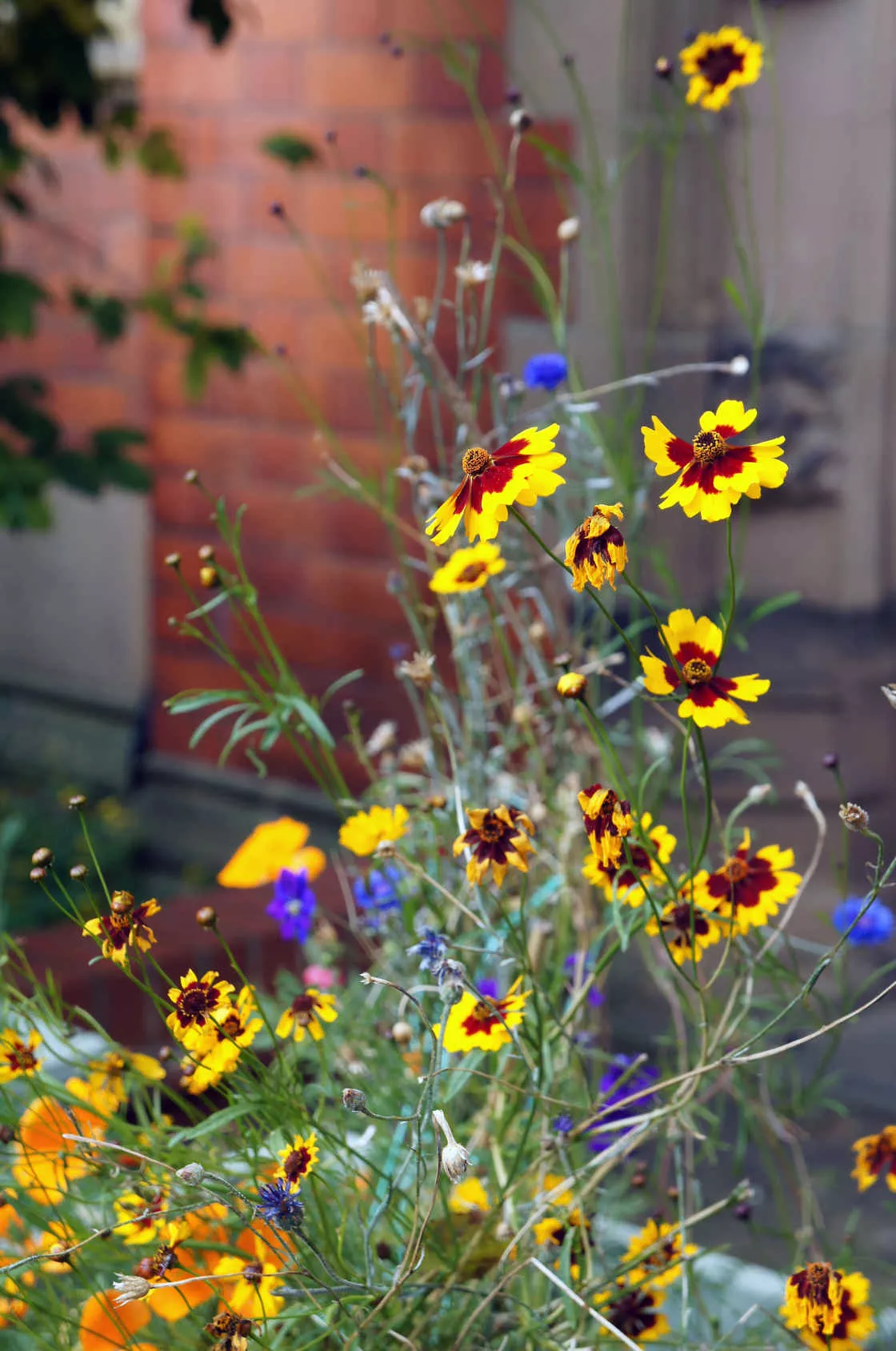 But for me, I prefer to go to the botanical garden behind the hostel. The 'century-old building' I live in is just a wall away from the botanical garden, so I can often access the hinterland of the botanical garden through a 'secret passage' (unfortunately, I tried to do the same thing last year, only to find that the secret passage had been firmly sealed off by an iron fence). As a result, the botanical garden has truly become my own backyard.
But for me, I prefer to go to the botanical garden behind the hostel. The 'century-old building' I live in is just a wall away from the botanical garden, so I can often access the hinterland of the botanical garden through a 'secret passage' (unfortunately, I tried to do the same thing last year, only to find that the secret passage had been firmly sealed off by an iron fence). As a result, the botanical garden has truly become my own backyard.
Although the green cover of the hostel area is already very high, the Botanical Gardens excels in its layout and design. Compared to the flat Victoria Park, the botanical garden covers a much smaller area, but uses woods and water systems to divide the park into sections. In addition to the open-air plants, the park has several large trellises with succulents and various tropical plants.
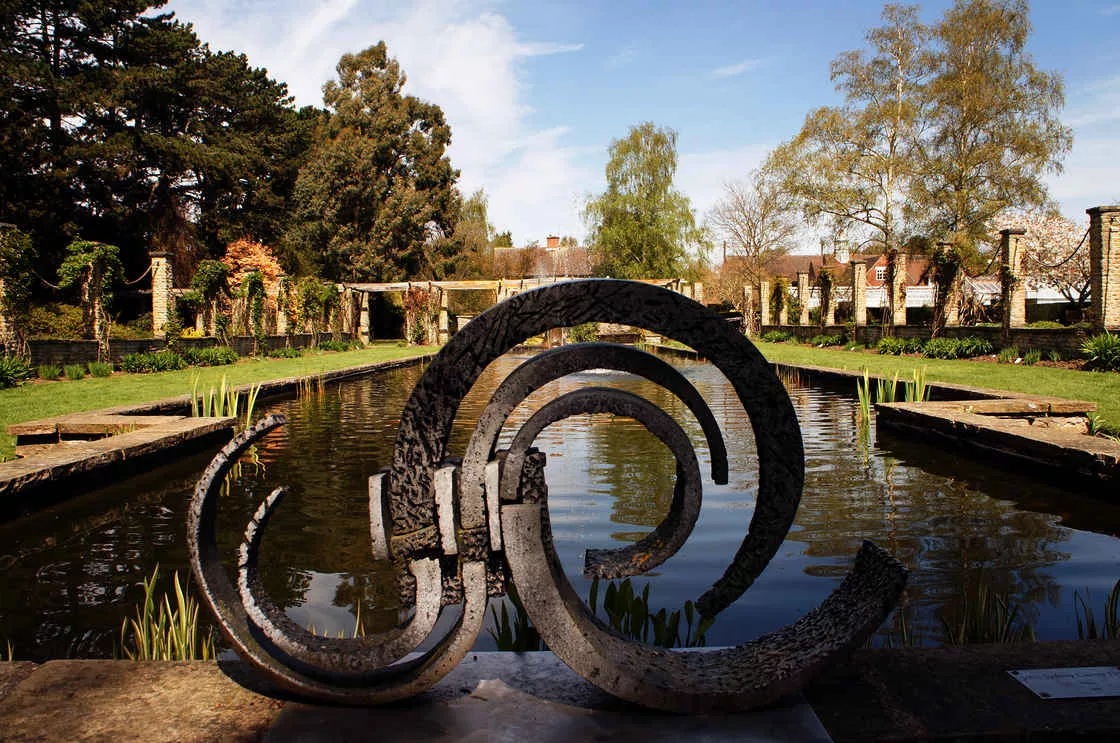
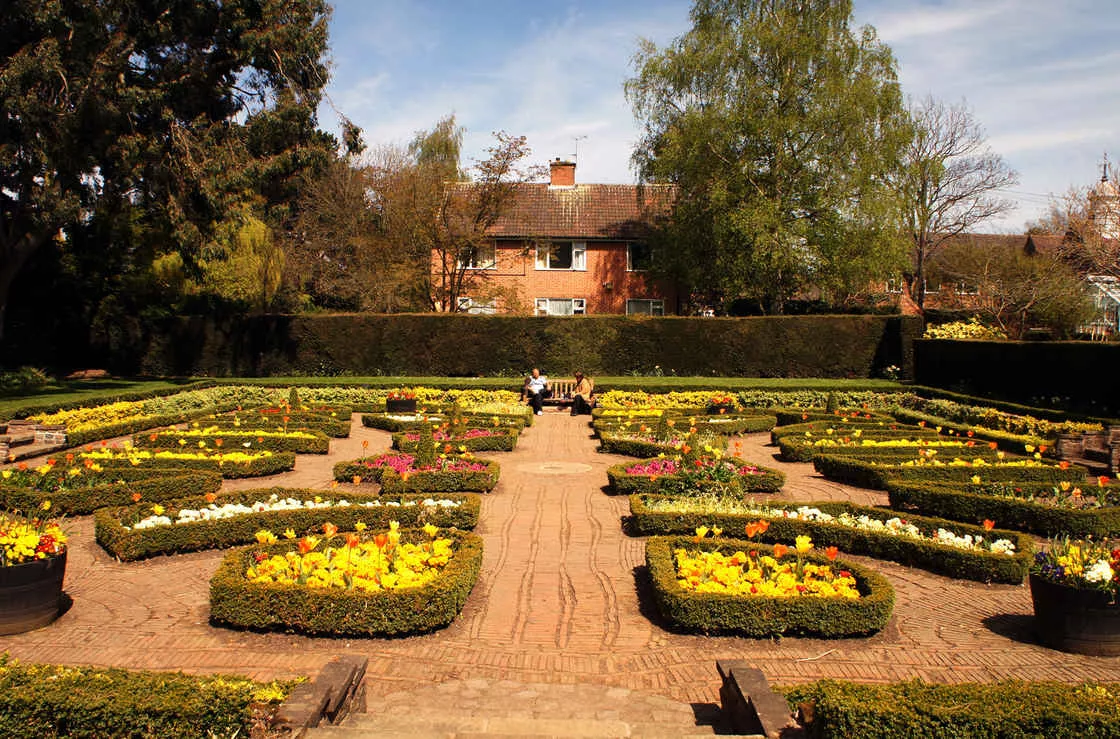 In the rare winter sunshine, or when the spring flowers bloom, I often go next door to the botanical gardens for inspiration for my dissertation, or bring the week's need to finish reading a Renaissance novel, or a Shakespeare play, and find a chair to read a chapter for a change of pace. It also made me miss this dorm area and this botanical garden when I returned to my concrete university town. It was not only the tranquil and beautiful environment, but also my own self who was still harboring poetry and faraway places.
In the rare winter sunshine, or when the spring flowers bloom, I often go next door to the botanical gardens for inspiration for my dissertation, or bring the week's need to finish reading a Renaissance novel, or a Shakespeare play, and find a chair to read a chapter for a change of pace. It also made me miss this dorm area and this botanical garden when I returned to my concrete university town. It was not only the tranquil and beautiful environment, but also my own self who was still harboring poetry and faraway places.
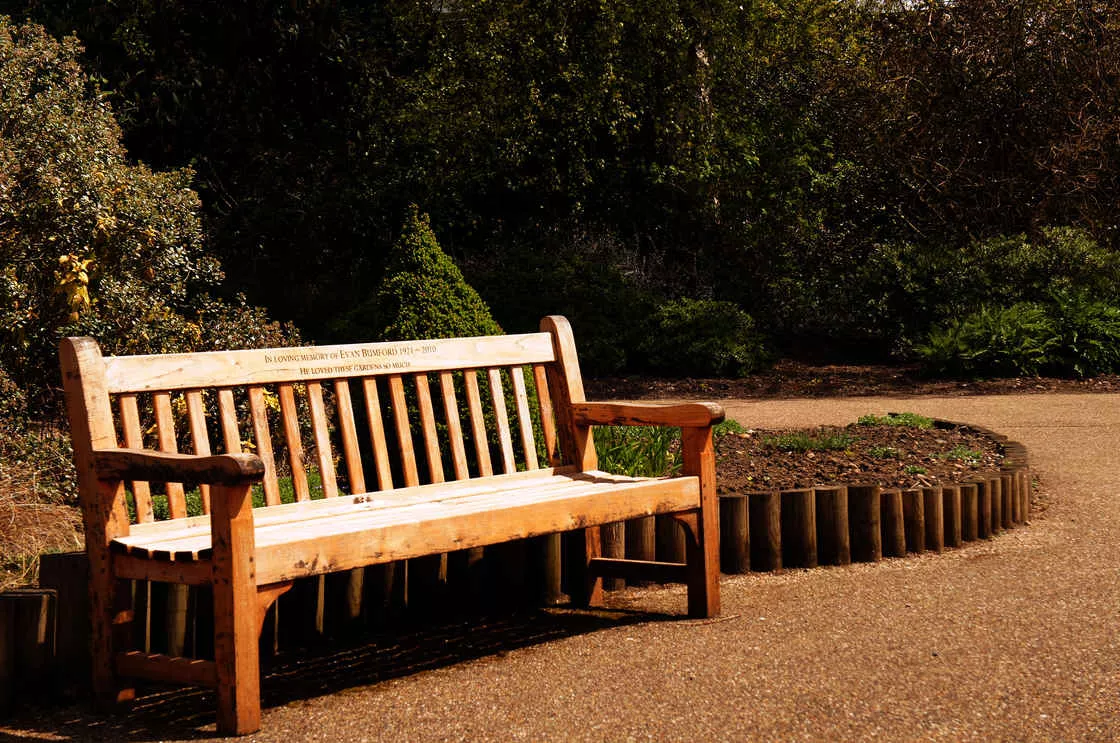 The Year on the Meridian | Conclusion
The Year on the Meridian | Conclusion
Despite only being here for nine months, this 'rare and proper' little city has been the longest I've ever stayed outside of the country. Since I basically walk this route several times a week, I'm still able to take a 'cloud walk' with my blog and photos from back in the day in front of my computer after ten years. It's really unexpected to have a decade of dusty photos to share with you here.
Most towns in England are red brick, green trees, stone roads, churches, small shops and train stations. Leicester is not exempt from this. However, behind the similar scenery is a different story belonging to each person in the city.
